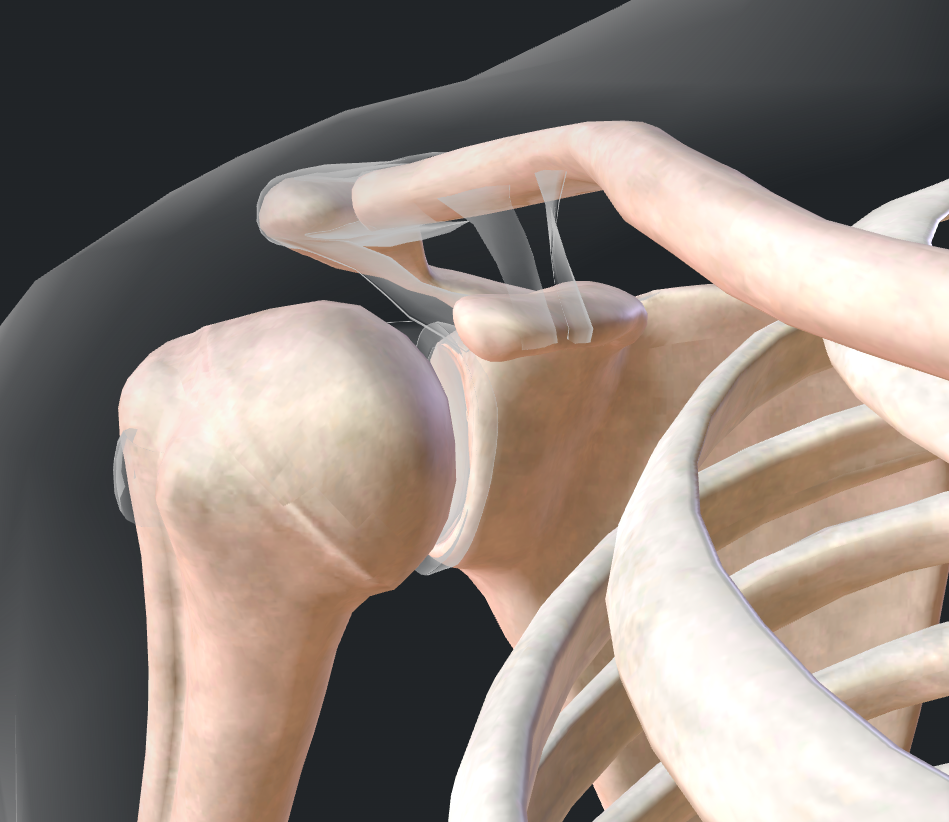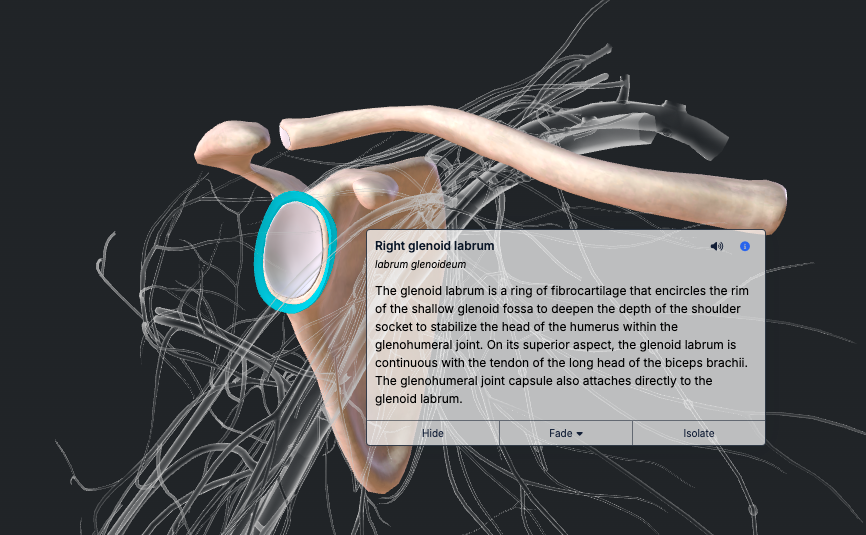
Patient Education:
Shoulder Basics
Education
Shoulder Basics
The shoulder is one of the most mobile joints in the body. It connects the arm to the torso and allows a wide range of motion that helps with everyday activities, sports, and work. However, with this mobility comes a trade-off: the shoulder sacrifices some stability to allow greater motion. Understanding this balance between mobility and stability is important when considering shoulder injuries and treatment options.
Like other joints, the shoulder is made up of bones, muscles, ligaments, tendons, and cartilage. Each structure plays a role in maintaining shoulder stability and function.
Bony Anatomy
The shoulder is a ball-and-socket joint. The "ball" is the head of the humerus (upper arm bone), and the "socket" is the glenoid, which is part of the scapula (shoulder blade). Unlike the hip joint, which has a deep socket for stability, the shoulder socket is shallow. This design allows greater freedom of movement but provides less natural stability.
Other important bones of the shoulder include:
The clavicle (collarbone), which connects the shoulder to the sternum (breastbone).
The acromion, part of the scapula that forms the top of the shoulder.
The scapula (shoulder blade), which supports muscle and ligament attachments.
Because of its shallow socket, the shoulder is often compared to a golf ball sitting on a tee. This helps explain why shoulder dislocations are relatively common — the joint relies heavily on surrounding soft tissues to stay in place.
Static Soft Tissue Stabilizers
To support stability, the shoulder depends on static soft tissue structures:
The labrum is a ring of cartilage that deepens the socket and helps keep the ball of the shoulder in position.
The joint capsule is a tough layer of tissue that surrounds the joint, providing support.
Ligaments connect the bones and help control movement, especially at the limits of range of motion.
These structures work together to help maintain shoulder stability.
Dynamic Stabilizers: The Rotator Cuff
The rotator cuff is a group of four muscles and their tendons that play a key role in shoulder stability:
Supraspinatus
Infraspinatus
Teres minor
Subscapularis
These muscles surround the shoulder and help hold the ball in the socket during movement. The rotator cuff also assists with lifting and rotating the arm.
When functioning properly, the rotator cuff keeps the joint stable and allows larger muscles like the deltoid and pectoralis major to generate power for everyday activities and sports.
Why Balance Matters
The shoulder's range of motion makes it vulnerable to injury. If any part of the system — bones, soft tissues, or muscles — is not functioning correctly, it can lead to pain, instability, or weakness.
This explains many common shoulder problems:
Rotator cuff tears involve damage to the tendons that stabilize the joint.
Shoulder instability often results from injury to the labrum or joint capsule.
Arthritis occurs when the cartilage that cushions the joint wears down over time.
Impingement syndrome happens when structures in the shoulder rub against each other, leading to pain and limited movement.
Understanding how the shoulder works helps explain treatment recommendations, whether they involve physical therapy, injections, or surgery.
Conclusion
The shoulder is a complex joint that depends on a combination of bones, soft tissues, and muscles to function properly. Understanding these basics can help you better understand your condition and the reasons behind your treatment plan.
If you are experiencing shoulder pain, instability, or weakness, contact our office for a complete evaluation and a personalized care plan.



